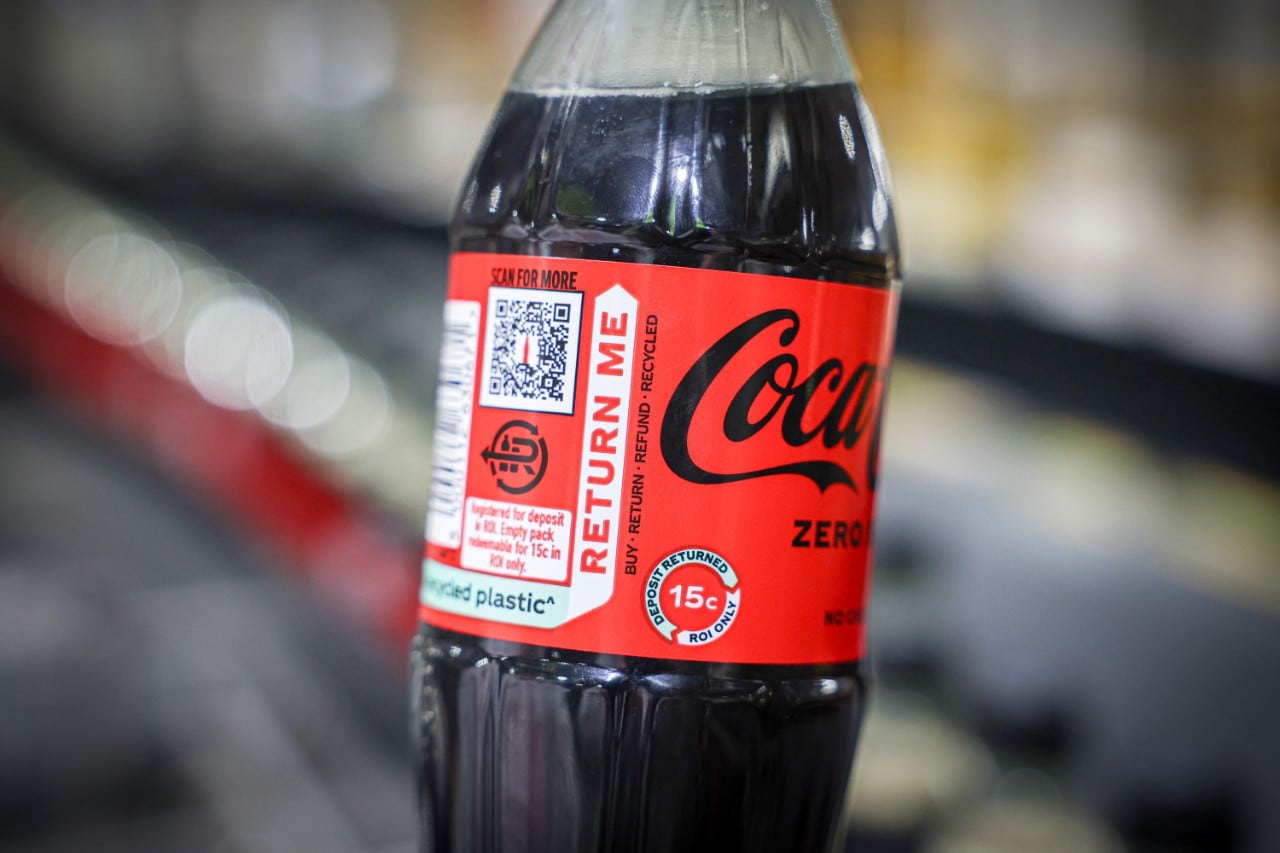Marks & Spencer created a stir on social media recently with the launch of its Only … Ingredients range. While the concept itself was solid – keep the ingredients list as short as possible – some people were concerned that these product reformulations were an over-simplification.
Removing the fortified ingredients often found in breakfast cereals could mean children lose access to a wide range of vitamins and minerals.
Apprehensions were also raised over ‘misleading’ ingredients lists – the M&S Only 5 Ingredients Dark Chocolate and Almond Date Bar claims it contains just five ingredients on front of pack, but the chocolate in the bar is made from five ingredients on its own – this is only indicated on the back of pack within the ingredients list.
“Although the natural food movement is positive, the increasing focus on ultra-processed foods has led to some confusion,” agreed ACI Group account manager Jack Helm.
“Simplifying ingredients doesn’t always equate to healthier products, and removing fortification systems could unintentionally compromise nutrition. A focus on minimalist labels must still consider functional benefits, such as taste and nutrient density.”
Still, Helm notes that the move towards simplified ingredients lists could create opportunities for manufacturers to improve the traceability of their products and the potential to simplify their supply chains.
“Reducing ingredient complexity reshapes sourcing strategy by shifting focus from managing wide-ranging formulations to securing a smaller portfolio of high-integrity, multifunctional ingredients.
“When formulations are simplified, each remaining component takes on greater importance – not just in terms of function, but in meeting clean label standards, aligning with sustainability goals and resonating with the increasingly label-literate consumer.”
However, reducing ingredient lists arguably demands a more strategic and proactive approach to sourcing. Ingredients suppliers need to be carefully vetted not only for quality and functionality, but also transparency, provenance and clean processing methods.
“Fewer ingredients inherently increase the risk exposure of a formulation, so resilience becomes key – often achieved through closer supplier relationships, regional diversification, and robust technical support,” Helm added.
This shift toward simplicity isn’t entirely new; more than a century ago the original Shredded Wheat was – and still is – made from just one ingredient, long before the term ultra-processed food was even coined.
“What’s changed is that the clean label mindset,” Helm said, who described it as a once niche market heading mainstream.
“It’s being fuelled by growing scepticism around ultra-processed foods and a demand for radical transparency.”
Adapt smarter: Reinvent supply chains for today’s market demands
Whether it’s evolving consumer preferences like the shift to clean-label products or global volatility, brands that thrive aren’t reacting faster - they’re anticipating smarter. That begins by connecting your data - suppliers, ingredients, locations, risks - into a single system that offers true line of sight. Traditional, siloed systems simply can’t keep up with today’s demands.

TraceGains’ networked ecosystem is built to meet this challenge head-on. It digitises your entire supply chain, centralising data, reducing manual processes, and unlocking real-time collaboration across teams and partners. Whether you’re reformulating for clean-label demands, improving supplier engagement, or navigating new regulatory landscapes, TraceGains supports your processes from source to shelf, removes friction, boosts agility, and builds long-term resilience.
In a world where adaptability is everything, smart systems aren’t just nice to have - they’re essential. Build resilience. Reformulate with confidence. Embrace digital transformation - without the headaches.
Keeping your competitive edge
Bal Chand, marketing manager at TraceGains, also noted that reducing ingredient complexity necessitated a shift in sourcing strategy and prompted a greater need for deeper ESG and compliance vetting. However, traditional processes often can’t scale fast enough to meet these demands.
“Embracing digital transformation can streamline this process, providing access to a database of suppliers, reducing manual paperwork and flagging risk hotspots in real time,” Chand offered.
“This ensures that quality remains high without delaying product launches.”
Manufacturers wishing to transition from complex formulations to single-ingredient or radically simple products need to understand the shift will upend R&D, packaging, nutrition and regulatory workflows. This can create bottlenecks and reduce speed to market, critically impacting your competitive edge.
“Integrating partners that can support from source-to-shelf within a single platform can reduce development cycles, supporting agility and helping maintain a competitive edge,” Chand continued.
“We are seeing this already take off with the recent partnership between TraceGains and Esko where we have partnered to maximise the integration of regulatory data, supplier management, NPD and packaging workflows.”
There also comes the question of maintaining consistent quality when moving to simpler formulations. When you’re relying on natural ingredients for example, you’re much more exposed to variability – whether that’s due to climate events, seasonal changes, or even broader supply chain disruptions like shipping delays or trade tariffs.
Dave Howarth, executive director at global supply chain and logistics consultancy SCALA, elaborated: “In this context, sourcing becomes just as important, if not more so, than the manufacturing process itself.
“Ensuring that core ingredients are consistently high quality, reliably available, and competitively priced is now a critical capability. To achieve this, it’s no longer enough just to have good suppliers – businesses must build resilience contingencies into sourcing and production.
“That means strong supply chain management expertise, as well as strategic supplier collaboration, smarter, data-driven forecasting, and broader supply networks that can adapt quickly when things change. Ultimately, it’s about using insight, not instinct, to futureproof operations.”
Less ingredients, more complications?
Manufacturers committed to reducing the ingredient complexity of their products need to stay agile in order to navigate the complications that can arise when dealing with a much tighter supply chain.
If you’re going to rely on a handful of ingredients to make your products, then you need to be able to plan for any eventuality in which accessing them can be disrupted.
For Chand, the answer lies in real-time supplier dashboards which can monitor supplier performance and allow for “proactive mitigation before shortages impact production”.
He continued: “Strong supplier relationships remain essential, but the smartest manufacturers are also turning to advanced formula management tools powered by AI to stay ahead. These tools not only speed up formulation testing but can also predict performance outcomes, giving teams a critical edge in adapting quickly and confidently.”
If you’ve decided to go all in on a single ingredient product then it pays to have as many suppliers on hand as possible.
“The larger lesson is that food processors and manufacturers need to strike a balance between specialising on a small number of vendors to minimise uncertainty and transaction costs, or maintaining a large rolodex of vendors to keep their options open when unexpected supply chain challenges interrupt supply,” Professor Volpe added.
Simplifying ingredient lists inherently concentrates supply risk, Helm weighed in – with fewer inputs, each one becomes more mission-critical. To manage this, manufacturers are adopting more robust procurement frameworks that emphasise dual sourcing, raw material equivalency, and greater visibility across the supply chain.
“At ACI Group, we help our partners mitigate these risks by mapping ingredient alternatives, maintaining stock buffers, and using predictive supply modelling,” said Helm. “Multi-sourcing – the practice of qualifying multiple suppliers or origins for the same input – allows for smoother substitutions during disruptions, while formulation flexibility ensures that slight specification differences don’t derail production.
“However, in simplified products, the margin for reformulation is far smaller. Without enrichment systems or functional layers to compensate, a single unavailable ingredient can have a much larger impact on the product’s nutritional profile, sensory quality, or marketing claims.
“That’s why technical alignment between sourcing and NPD is more important than ever – to ensure that any substitution or formulation pivot still meets the clean-label promise while delivering product integrity”
Circling back to the development of products with fewer ingredients, reformulating for simplicity carries the added burden of time-intensive R&D, as fewer ingredients must work harder to deliver on multiple fronts.
Removing preservatives may necessitate shorter shelf lives or stricter environmental controls, while eliminating texturisers can impact the consumer’s sensory experience.
Sourcing from local suppliers
Helm suggests local sourcing to be a natural fit for simplified formulations – products with shorter ingredient lists benefit from greater transparency, and nothing communicates provenance better than locally grown or regionally produced components.
“Local sourcing reduces supply chain complexity, supports faster turnaround times, reduces carbon footprint, and strengthens the narrative of food integrity, which is particularly important in consumer-facing categories like cereals, bakery and dairy,” he explained.
“Ingredients sourced closer to home often require less processing, enjoy a shorter transit window, and support clean-label declarations – all of which reinforce the appeal of simplicity.”
Local sourcing can play a critical role in supporting simpler ingredient profiles, especially for products with fewer additives and preservatives.
“Sourcing regionally helps preserve freshness and extend shelf life,” Chand added.
“Networked ingredient marketplaces facilitate the connection between NPD and procurement teams with local suppliers, ensuring that key information is readily available and supporting the shift toward radical simplicity.”
Shortening the supply chain by sourcing local can reduce risk around delays and disruptions, as well as offer businesses better visibility of where their ingredients are coming from and how they’re being produced.
“Plus, it typically generates lower transport emissions, which is something many consumers are increasingly factoring into their buying decisions,” Howarth pointed out.
However, manufacturers need to acknowledge the limits of localisation and minimalism.
“While simpler, fewer-ingredient products often align with the healthy eating trend, it’s critical to strike a balance between simplicity and nutrition, particularly when local ingredients may not always offer the same functionality or enrichment as those sourced from other regions,” Helm said.
In some instances it might not even be possible to source locally, and it can be harder to scale – or more expensive.
“It’s important that businesses see the decision to nearshore versus offshore as part of their broader resilience strategy and make the best decision to support their unique circumstances,” said Howarth.
“The key is cultivating flexibility and having a diversified network that can respond quickly when disruption hits.”
Dr Ricky Volpe, professor of Agribusiness at Cal Poly over in the States, made a similar observation regarding the viability of local sourcing. He noted that it was great for building connections with and supporting the local economy, providing transparency to customers and supplementing supply, but echoed Howarth’s concerns over scale.
“There are surely exceptions but for a manufacturer seeking to simplify the process and rely on a small number of key ingredients that are essential to the final product, local sourcing will typically not provide the quantity of inputs necessary to meet total demand,” Volpe said.
The demand for traceability
Arguably, the greatest benefits of a reduced ingredients list is the greater level of traceability it creates for your product. At a time where consumers are demanding to know more about where their food comes from, it’s hard to deny it’s a lot easier to showcase exactly what a consumer can expect to find in their food.
It can also facilitate much closer relationships between manufacturers and suppliers. In the coffee industry, for example, the shift to shorter supply chains involves reducing the number of intermediaries and moving towards more direct relationships between farmers, roasters and consumers.
Will Corby, director of Coffee at Pact Coffee, commented: “Pact Coffee has traded directly with farmers for over a decade to bring our customers the very best coffee beans directly from the farm. This way, we can ensure farmers get paid a truly fair price for their hard work and expertise.
“This also means our customers have full transparency over the origin of their coffee beans and how they’re farmed, so that they can make fully informed choices about what they’re brewing. If there’s no sign of the farmer on the packaging, the chances are it’s a blend of cheap beans over-roasted to disguise their lack of flavour.”
This focus on where the products come from generates a greater level of trust from the consumer, especially when the ingredients list boils down to just a handful of beans. The lack of added sugars and other artificial flavourings also dials into the growing demand for clean label food and drink.
“They’re also not needed if you have the right beans to begin with,” Corby continued. “Like grapes, the best coffee beans have their own natural flavours and aromas, and I think consumers will be surprised at what they’ll discover without anything artificial masking them.”
For Chand, he believes manufacturers wishing to become more transparent need to leverage digital tools that provide instant access to supplier data: “Centralising specifications and ESG data make it easier to ensure transparency and maintain high standards.
“Understanding supplier risk and insights enable brands to pivot to other suppliers quickly, which is crucial for maintaining supply chain integrity.”
There are many things to consider if you choose to simplify your ingredients lists that extend beyond what appears on the back of the box. While you can make your brand appear more transparent and offer a product with greater perceived health benefits, you and your business need to make sure that your supply chain can manage the risks of relying on less ingredients.





